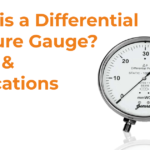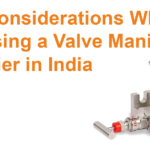In industrial settings, the role of a pressure gauge provides more than just a measurement; it’s a core of safety, efficiency, and quality control. Consider a scenario in a chemical manufacturing facility where precise pressure control is necessary. Even slight errors in gauge readings can result in operational inefficiencies or safety issues, stressing the significance of precision.
Pressure Gauge Accuracy: A Technical Overview
What is accuracy in Pressure Gauges?
Accuracy in pressure gauges refers to how precisely the instrument measures and shows the actual pressure value. It is similar to the precision of a measurement instrument, with the purpose of minimising deviation from the true value. This is often expressed as a percentage, indicating the probable deviation from actual pressure.
“Accuracy in pressure measurement is the degree to which a gauge’s readings reflect the true pressure values.”
Why Accuracy Matters in Pressure Gauges?
Accuracy in pressure gauge measurements is of the utmost importance in a wide range of industrial measuring applications even suggested by the world’s most reputed pressure gauge manufacturers, largely because it plays an important role in assuring safety, maintaining quality control, and supporting process optimisation. Accurate measurements are critical in systems like HVAC and hydraulics, as they prevent potentially hazardous situations.
Furthermore, they ensure that products and procedures meet set standards, preventing costly mistakes. Also, precise measurement allows for laborious process adjustments, leading in better efficiency and less waste. Together, these considerations highlight the importance of accuracy in ensuring operational excellence and safety.
- Safety
- Quality Control
- Process Optimization
NOTE: ONLY USE THE PRESSURE GAUGE MANUFACTURER’S SUGGESTED METHOD TO MEASURE ACCURACY.
The Modern Concepts of Pressure Gauge Accuracy
- Accuracy Class:
Pressure gauges are classified into accuracy classes, such as 0.1%, 0.25%, 1%, and 2.5%, which represent the maximum permitted inaccuracy as a percentage of the full-scale value. Precise instruments utilised in key measurements may provide even more accurate classifications. - Linearity, Hysteresis, and Repeatability:
In addition to basic accuracy, these parameters describe how well a gauge maintains precision across the entire measurement range, how previous pressures affect its performance (hysteresis), and how consistently it can replicate readings under the same conditions.
- Temperature Compensation:
High-quality gauges use materials and design elements to reduce the effect of temperature fluctuations on accuracy. This could involve the usage of bimetallic components or temperature-compensated springs.
Factors Affecting on Accuracy of Pressure Gauge
A number of industrial (machinery, human, environmental) elements have a significant impact on a pressure gauge’s accuracy. Thermal fluctuations can cause considerable differences in measurement accuracy by affecting the physical properties of the gauge’s materials and the medium under test.
Mechanical vibrations, which are common in industrial environments, can affect the stability and reliability of pressure readings.
Additionally, the gauge’s natural wear and tear over time reduces its precision. The total accuracy of the gauge is mostly dependent on the internal component precision and the construction quality of the instrument.
- Temperature Fluctuations
- Mechanical Vibrations
- Wear and Tear
- Construction and Component Quality
Technical Insights into Pressure Gauge Calibration
What is Calibration in Pressure Gauges?
Calibration in pressure gauges is the process of adjusting the gauge to ensure that its readings are accurate. It’s similar to setting a clock to the correct time.
This is accomplished by comparing the gauge’s readings to a standard known value and making any required modifications. Regular calibration ensures that the pressure gauge provides accurate readings, which is critical for safety, quality, and smooth operation.
Even the highest-quality pressure measuring instruments require regular calibration to prevent significant inaccuracies, which can lead to costly blunders, project delays, and increased prices.
Why Calibration Is Needed?
Calibration appears as a solution, an approach that ensures gauges provide accurate readings by aligning them with established standards. This is more than simply ordinary maintenance; it is a key precaution against progressive accuracy drift, which can have serious repercussions.
Why Calibration matters in Pressure Gauges?
A calibrated pressure gauge is a constant & crucial practice in the industries for ensuring measurement accuracy, compliance, and improved performance. It entails calibrating gauges to meet recognised standards, hence ensuring precision.
Regular calibration is essential for correcting deviations caused by environmental factors or wear, as well as avoiding inaccuracies that could lead to safety issues, noncompliance, and process inefficiencies.
This method not only improves measuring accuracy, but it also maintains quality and safety standards across sectors.
- Ensuring Measurement Accuracy
- Operational Safety
- Compliance with Standards
- Process Efficiency
- Quality Control
- Longevity of Instruments
NOTE: ONLY USE THE PRESSURE GAUGE MANUFACTURER’S SUGGESTED METHOD FOR CALIBRATION.
The Industrial Concepts/Procedures of Pressure Gauge Calibration
- Primary and Secondary Standards: Primary standards provide the best accuracy and can be traced back to national or international standards. Secondary standards, while still accurate, get their accuracy from comparisons with primary standards.
- Dead Weight Testers: Dead weight testers are used as primary standards for calibrations with the highest precision possible. They generate accurate pressure by applying a given mass to a piston with a specified area, providing unmatched calibration accuracy.
- Automated Calibration Systems: Advanced calibration setups employ automated pressure controllers and software capable of producing thorough calibration certifications, tracking calibration history, and even forecasting future calibration requirements based on historical data.
Key Considerations for Precision Calibration of Pressure Gauges
Ensuring the accuracy and dependability of pressure gauge calibration needs a comprehensive approach that considers a wide range of elements that have a direct impact on the calibration process.
These key considerations include:
- Type of Pressure Gauge: Tailoring calibration methods to the specific gauge type.
- Calibration Standards: Utilising precise, traceable standards for comparison.
- Environmental Conditions: Accounting for impacts of temperature, humidity, and atmospheric pressure.
- Calibration Equipment: Employing highly accurate and well-maintained calibration instruments.
- Frequency of Calibration: Establishing a calibration schedule based on usage and exposure.
- Procedure and Documentation: Adhering to standardised procedures and meticulous documentation suggested by the gauge manufacturers and suppliers.
- Operator Skill: Leveraging the expertise of experienced technicians.
- Physical Condition of the Gauge: Inspecting for and addressing any physical impairments.
Conclusion:
Calibration is a critical process in pressure gauge production, ensuring that instruments reliably reflect true pressure levels. Calibration modifies gauges to meet specified standards, which is critical for manufacturers to maintain dependability and compliance.
Accuracy, or the gauge’s capacity to reduce deviation from actual pressure, is critical to operational safety and efficiency. Both are required for pressure gauge manufacturers to meet industry criteria, guaranteeing that their gauges function consistently in a variety of applications ranging from industrial processes to residential systems, emphasising the importance of precision and safety in pressure measurement.

